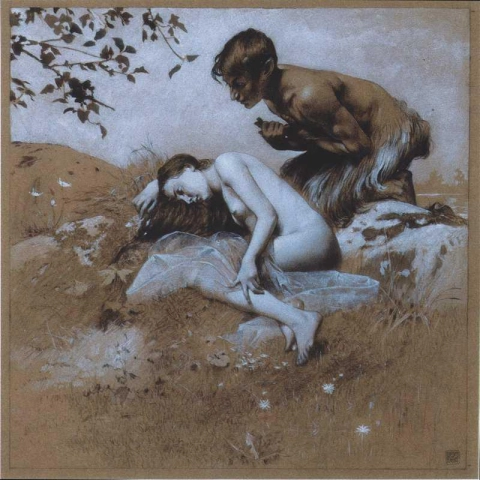

Hand painted reproductions of Koloman Moser
Koloman Moser: A Master of Viennese Art Nouveau
Koloman Moser (1868–1918) was an Austrian artist and designer who played a pivotal role in shaping the Viennese Art Nouveau movement. Renowned for his innovative designs in decorative arts, furniture, and graphics, Moser was a co-founder of the Wiener Werkstätte, a collective dedicated to uniting fine and applied arts.
Early Life and Artistic Development
Born in Vienna, Austria, in 1868, Koloman Moser demonstrated artistic talent from a young age. He studied at the Vienna School of Applied Arts, where he honed his skills in a wide range of disciplines, including painting, graphic design, and decorative arts.
In 1897, Moser became a founding member of the Vienna Secession, a progressive art movement that sought to break away from traditional academic styles. Later, in 1903, he co-founded the Wiener Werkstätte with architect Josef Hoffmann and financier Fritz Waerndorfer, focusing on creating high-quality, aesthetically unified works that bridged art and everyday life.
Style and Technique
Koloman Moser’s work is characterized by its bold geometric forms, intricate patterns, and harmonious color schemes. His designs often combined functionality with beauty, emphasizing the principles of the Gesamtkunstwerk, or “total work of art,” in which all aspects of a design were interconnected.
Moser’s contributions spanned a wide array of mediums, including furniture, stained glass, textiles, jewelry, and graphic design. His posters and book illustrations, such as those for Ver Sacrum, the official magazine of the Vienna Secession, showcase his mastery of line and composition.
Legacy and Recognition
Koloman Moser’s innovative designs left a lasting impact on the Art Nouveau and Modernist movements. Through the Wiener Werkstätte, he revolutionized the decorative arts, emphasizing craftsmanship, quality, and aesthetic unity. His works continue to inspire contemporary designers and are celebrated for their timeless elegance.
Today, Moser’s creations are housed in prestigious institutions such as the Vienna Museum and the Museum of Applied Arts (MAK). His legacy endures as a testament to the transformative power of art and design in daily life.
Own a Handcrafted Oil Painting Reproduction Inspired by Koloman Moser
Bring the elegance of Viennese Art Nouveau into your home with a handcrafted reproduction inspired by Koloman Moser’s iconic designs. Each piece captures the bold patterns, vibrant colors, and artistic sophistication that define his visionary work.
Imagine owning an original-style painting by one of the greatest artists in history. At POD, we offer you the chance to make this dream a reality. Each canvas is faithfully reproduced down to the smallest detail, allowing you to experience the beauty of the artist’s vision in your own home.
Our reproductions are crafted by experienced painters using the finest materials and time-honored methods. We are committed to delivering works of exceptional quality that will inspire and bring joy to your family for generations to come.



















